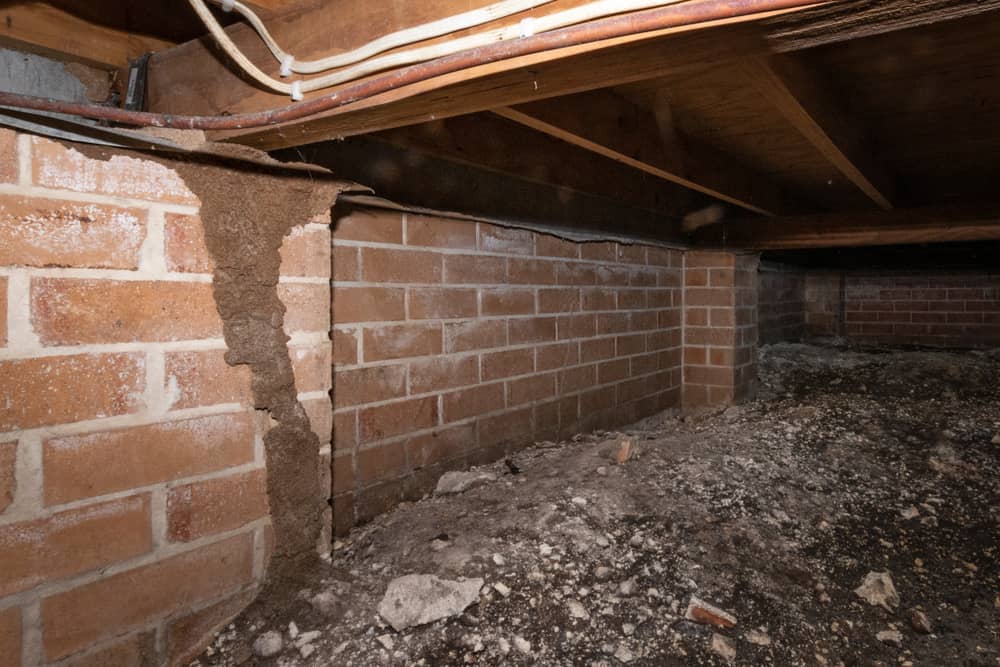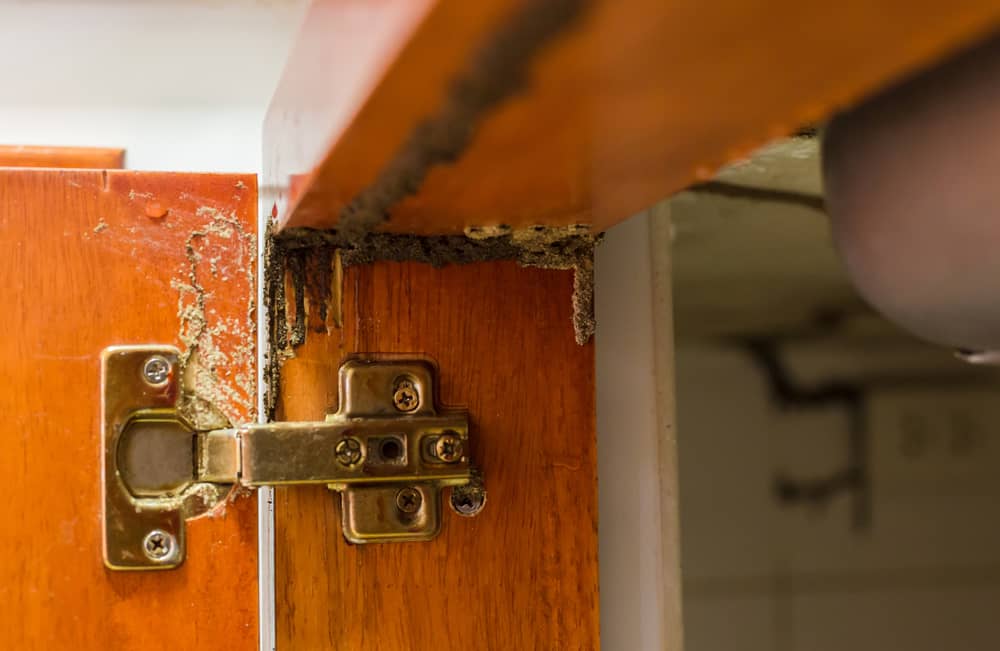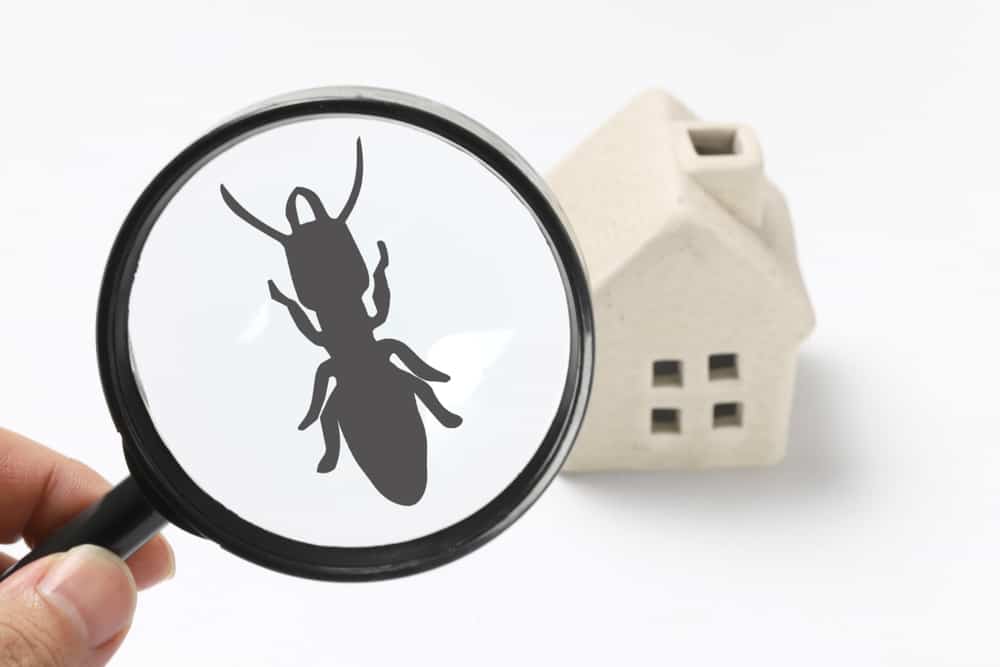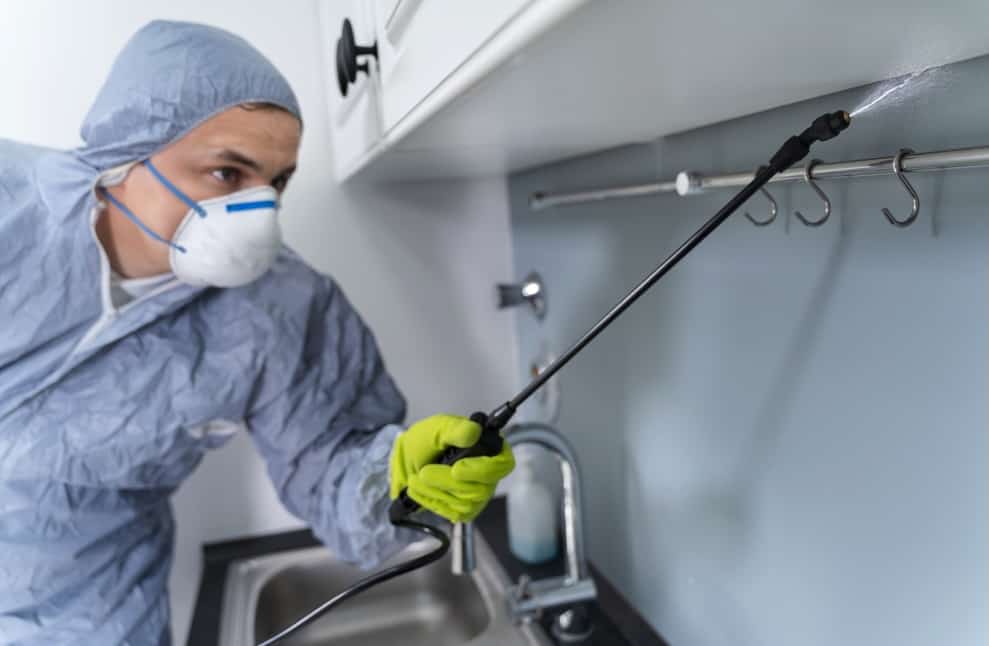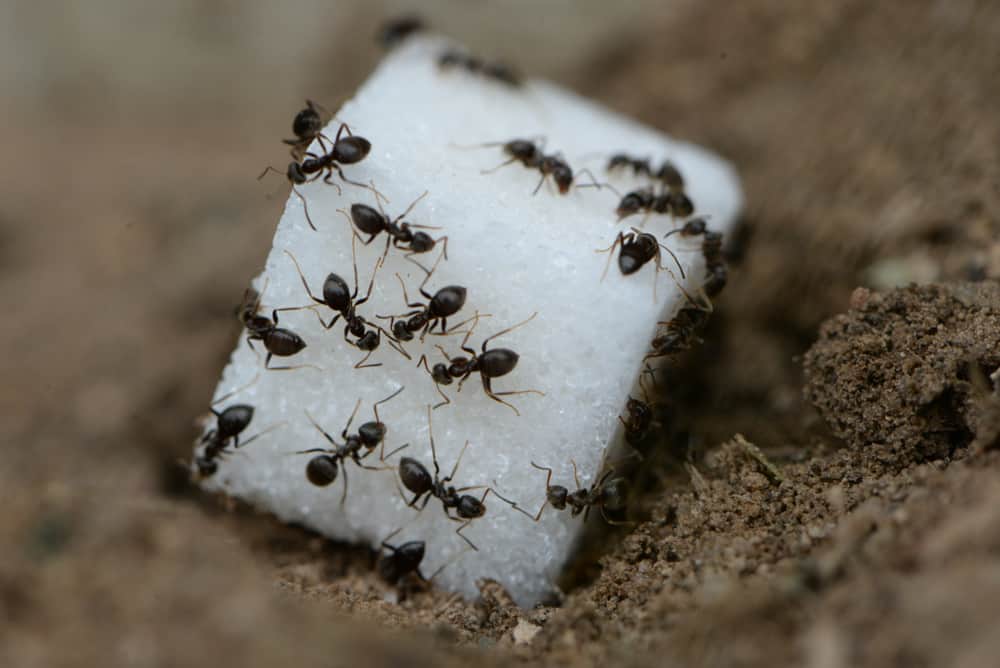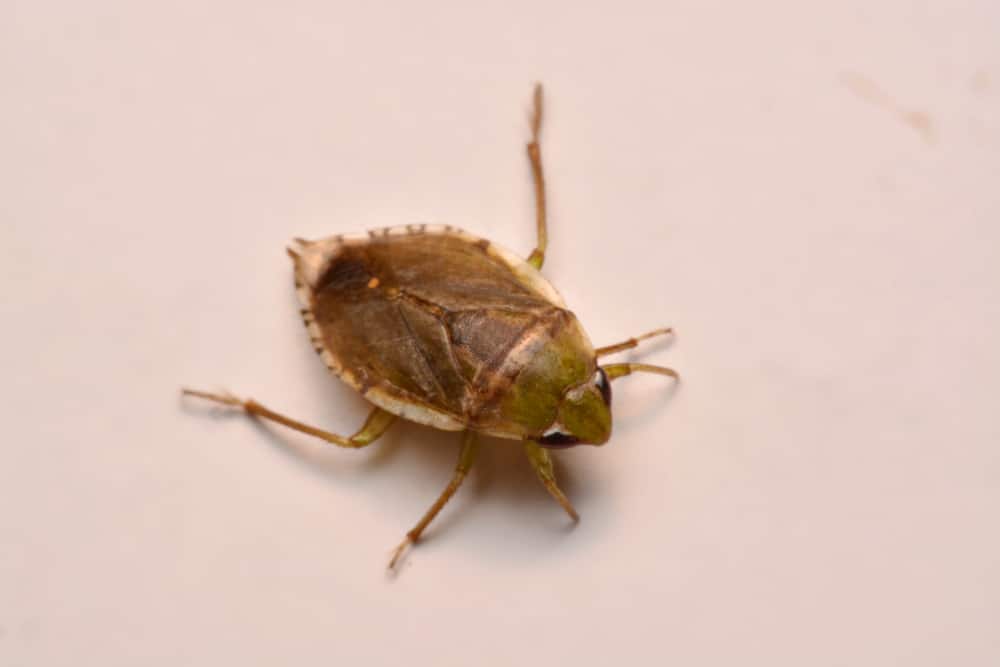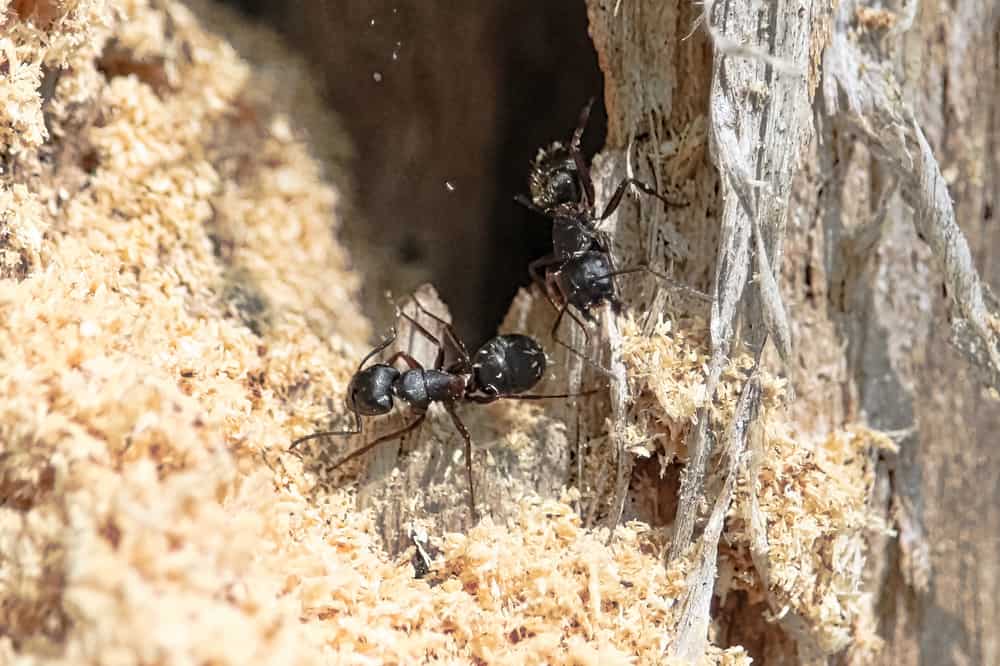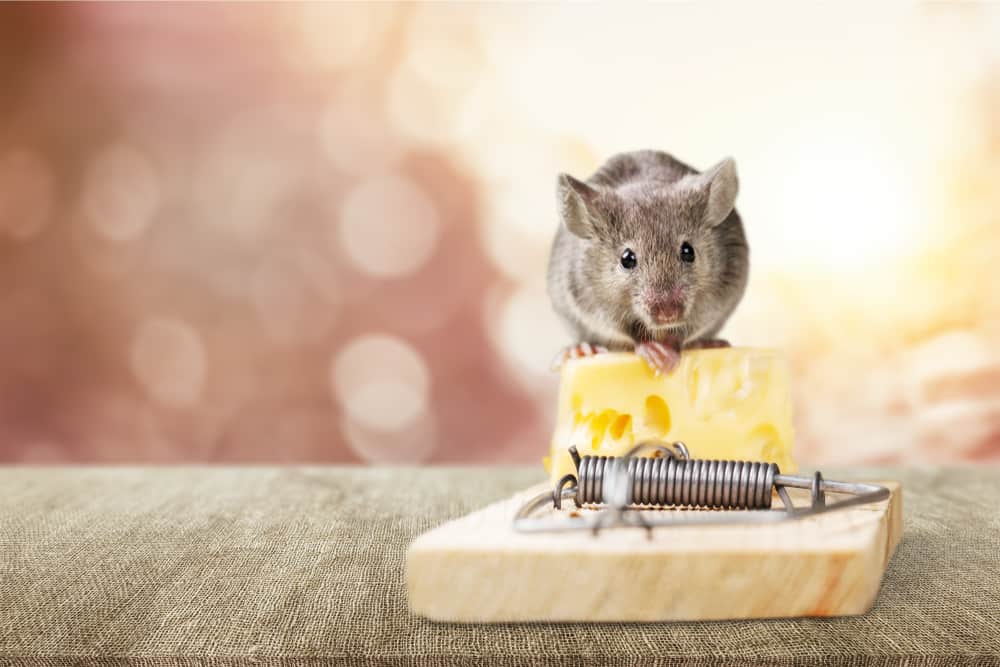How to Get Rid of Termites
Termites aren’t the best bug friends to have around your home. Their destructive chompers cut through most types of wood and can cause large amounts of structural damage to homes, sheds, garages, and even some outdoor equipment. But don’t worry if you are dealing with these pesky things. We can help you out, just keep reading.
What is the Fastest Way to Get Rid of Termites?
If you searched for this article, you probably have termites. We’re so sorry! Removing these guys from your property will not be easy but with a few steps in this article, you can do it relatively quickly. Just consult the professionals, make sure you protect your valuables during this process, and follow the rules of the exterminator you work with. So what’s the plan of attack?
While planning where to attack termite infestations, it’s important to recognize signs of termite damage so you don’t overlook any extra spots where they have been, and plan accordingly throughout your home.
Look out for:
- Decaying wood
- Misaligned doors
- Disfigured window frames
- Wood shavings appearing on your floors and carpets
- Hollowed spots in your grass, soil, gardens
- Hollowed logs near your home
- Holes in wood furnishings, doors, windows, etc.
It’s not going to be easy to find these suckers. They’re really small and hard to spot without a magnifying glass or even a microscope. Sometimes the eye will confuse the tube-shaped bodies of the termite to carpenter ants, mosquitos, and even ants. They have many pairs of legs and scuttle on the ground like lightning. Some are peanut-shaped with large lower thorax areas and others are slimmer and look more like a paper towel tube. The shape of the bug can tell you a lot about the species and what their goal is. For instance, Dampwood termites have huge pinchers that can get through hardwood.
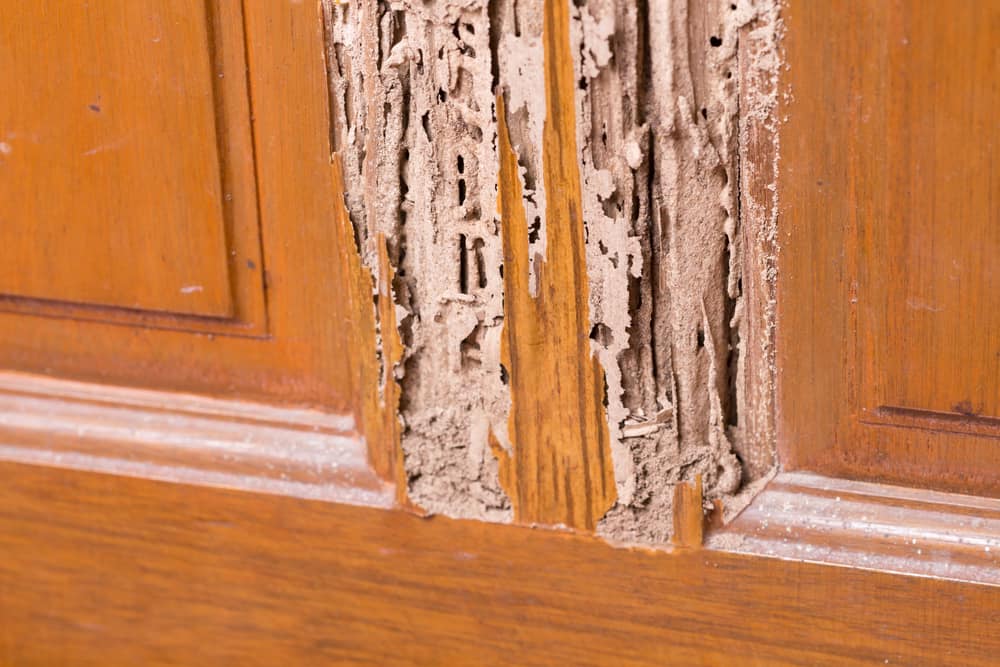
Try looking at the different types of termites here. That way, when you see them you’ll be able to properly articulate your problem to extermination companies.
PestWorld breaks down the types of termites as follows:
- Subterranean: Thes burrowing bugs exist in every state except for Alaska. They are common and they are pesky. Subterranean Termites live mostly underground or in areas with a ton of moisture. They go underneath your structures to attack the wood from the bottom up. They’re pretty small and resemble an almost shrimp-like body with small lets and a harder exoskeleton.
- Formosan: If you see these almost transparent creatures, call an exterminator immediately. The Formosan Termites are the most voracious and severe of all the termite types on this list. They are hard to detect, they move quickly, and they procreate even quicker. You will not have success if you try to deal with these on your own. They mainly settle in southern states as well as Hawaii. They love humidity.
- Dampwood: These suckers need moisture. You’ll most likely find Dampwood Termites in coastal towns and places where there is a ton of rain like Washington. These termites stand out because they are huge in comparison to the other types on this list.
- Drywood: Drywood termites don’t even need soil to get around. They are the most invasive type because they create nests and can get high up in your house.
- Conehead: Clearly Conehead Termites are shaped more like cones and their specialty is traveling underground. Since they tunnel, they’re extremely insidious and are often around before you even know it.
How do I get rid of termites in my house?
Don’t go burning down your home. It’s not that bad! You can use a variety of homeopathic solutions like essential oils to deter bugs if they are visible, but more than likely your termite issue runs much deeper than your carpet.
If you really want to get rid of these things you need to grab the phone and call up a professional. Exterminators specialize in species like this and they know how to get rid of them for good.
Fly swatters, ant control concentrates, and full treatment products are not as effective as getting an exterminator. When it’s all said and done you’ll end up spending more money on cleaners, traps, and random things to contain the termites than if you were to just hire a professional. We always advise against going for these things on your own.
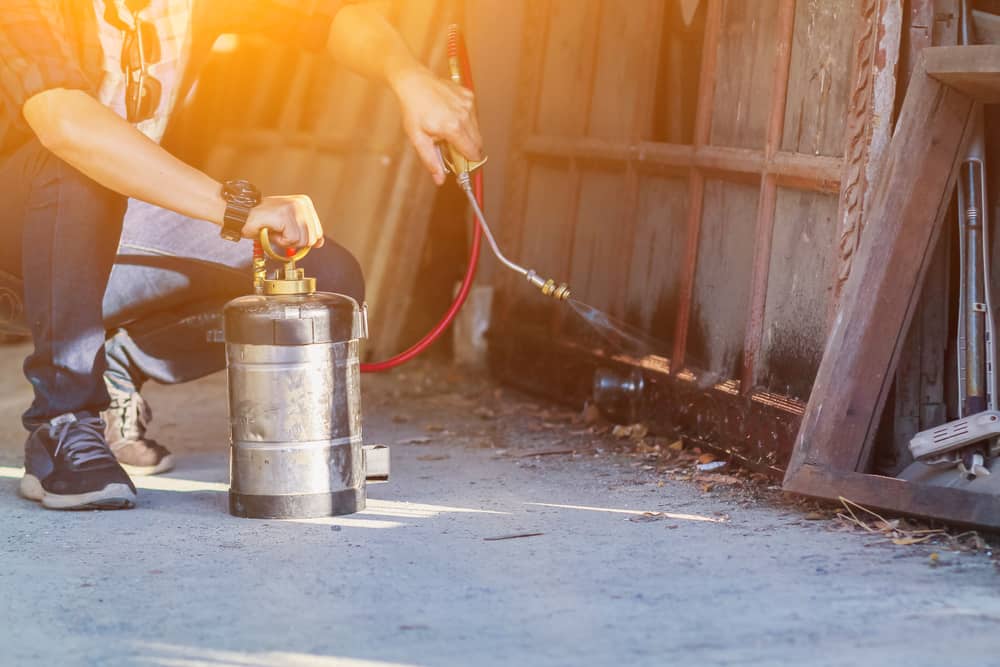
Exterminators have to go into homes using commercial-grade equipment that just isn’t available at the hardware store. The chemicals that these pros use can wipe termites out but can also be dangerous for humans and pets in your home. Make sure to vacate the premises when instructed and follow what your exterminator provides.
It’s also important that you don’t harm your environment with
Each year, termites and other pests cause $30 million in damage? You’re not alone.
Can I treat my home for termites myself?
Technically, yes you can treat termites yourself but we advise against it. You could delay damage by using Boric acid on your floors and walls. If you are waiting on a reply from an exterminator this is a great way to stop the spread of termites for a short period of time. Note: SHORT period of time! If you try to get rid of them completely with this tactic you’re just going to inflame the infestation and delay the inevitable – risking so much more damage.
If you are concerned about having your house sprayed, the chemicals used, or ethical concerns you may have to seek a DIY treatment that doesn’t involve harsh chemicals that are potentially unsafe around humans and pets.
How is termite infestation treated?
Termites communicate chemically, so scientists have designed compounds that drive termites to a different location. This shock treatment can really slow their progress through your property.
Here are some of the steps to treat a termite infestation:
- Termiticide is injected into the ground outside your home
- Soil is soaked in termiticide
- Termiticide eats through soil creating poisonous patches
- When termites get to the surface, they are killed by the poison on the soil
- Check in a month later
This process won’t get rid of the termites forever so keep reading.
In case you are concerned about exposure to hazardous chemicals, try calling up local exterminators near you. They will have the most local and up-to-date information. Since termites are regional and there are over 2,000 species, they’ll know better than anyone what to do.
Getting Rid of Termites Indoors
We already know that termites bore into your structures and destroy them. Hey are nothing to mess around with. Here are a few options both natural and chemical
- Bait Traps: Use leftover cardboard boxes. Leave them in a place you saw termites. Funnily enough, termites will come and eat the cardboard! It has a similar composition to less dense wood and will lure them out of their hiding spots. Once a large amount of termites take the bait, destroy the cardboard and extract the termites from your home. Many take the cardboard, put a large pot over the termites, take the cardboard outside and then set it on fire safely. Literally you have to set these things on fire. This will most likely take months to do manually if you don’t want to hire an exterminator.
- Drug Store Pesticides/Insecticides: Liquid pesticides like Termidor and Taurus SC are available almost everywhere. Go to your local grocery store at the inclination that termites are invading your space. Combine this treatment with the cardboard trick and you can do a dual attack.
- Get the Professionals: This is what we advise and endorse. No amount of home-termination will get rid of your problem for good. Termites are resilient. If one or two escape your problem could start all over again. Call a pro near you now.
How to Get Rid of Termites on Grass
- Insecticide: Of the over 2,000 species of termites, a grand majority of them breed underground. You are in deep trouble if you start seeing termites on the surface of your lawn. That means they have displaced enough soil beneath your grass that they have an entire colony. While a shovel may not get rid of them, store-bought insecticides and baits can help eliminate a large amount of these pests. Make sure you keep these chemicals away from children and pets.
- Boric Acid Traps: Boric acid is most commonly used with the cardboard bait station mentioned above. This insecticide kills termites by damaging their nervous system as well as dehydration. Replenish the station with more boric acid as the day goes on. If you spot multiple termite carcasses, it means the acid has done its magic in removing most, if not all, of the termites.
- Nematodes: This might sound nuts but you can get and plant parasitic nematodes in your grass to kill termites. The parasites search for termite larvae and eat them so that eventually the termites die of blood poisoning. After they get their fill, the nematodes will biodegrade in the soil.
How to Get Rid of Termites In Furniture
- Cardboard Trap (Again): This thing works! If termites get into your house to feast on your furniture, deploy the cardboard trap and wait for it to work its magic.
- Sun Bleaching: Termites love dark, wet environments so once you’ve deployed the trap above, take your furniture outside and leave it in the sun for as many days as possible (usually 48 to 72 hours). The sun will help kill the pests.
- Freeze: If your town ain’t the sunniest place on earth, let’s freeze the pests. If you have access to a large freezer, like in a restaurant, you can put furniture in there just as if you’d sun bleach it.
What Attracts Termites to a Home?
First and foremost, termites mainly feed off of wood—not only dead wood though. If your home features a cozy fireplace or backyard wood pile, termites are likely to find these spots are the perfect breeding ground.
Dead trees, tree stumps, and limbs are also easy targets for termite infestations.
Leaky pipes, bad drainage, and poor airflow create a dark and damp atmosphere that attracts termites. If you live in a rainy area, try to maintain good air flow or keep the house as dry as possible.
Residents who enjoy warmer climates are not immune to termites either. The humidity from the sun creates a high moisture environment. Make sure to check on drains, pipes, wooden furniture, and any wall cracks before an infestation appears.
Taking these precautionary measures could help you save thousands in repair and pest control fees which may not be covered by home insurance.
Termites are not the end of your home! You can take control of the situation by using our tips and the professionals.
